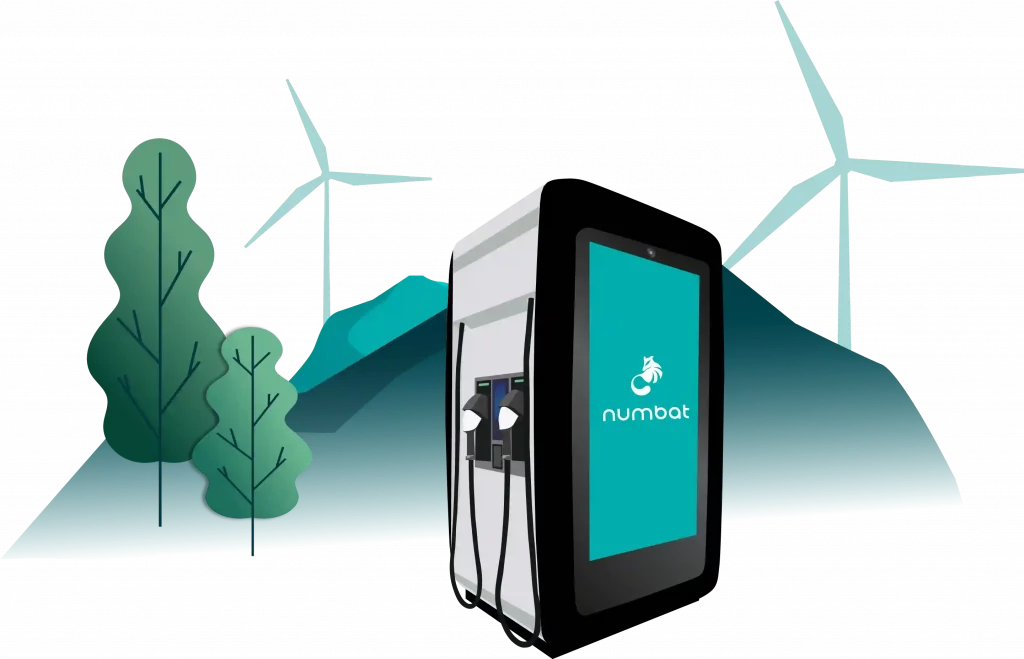Numbat - a greener perspective for the world
We should all take climate change seriously as it affects us all. With rising temperatures and more frequent natural disasters, urgent action is necessary. One easily preventable source of CO₂ emissions is the internal combustion engine, and many countries have announced a phase-out date to address this issue.

To meet the countries’ goals and create a sustainable future, we must prioritize the expansion of charging infrastructure. This includes installing fast charging stations and high-power chargers to increase availability during short stops.
States plan to stop registration of internal combustion engines by:
Sustainability and high-POwer Charger
The Numbat high-power-charger stands out from others due to its versatility. It offers fast charging, stores large amounts of electricity from renewable sources, and serves as a sustainable advertising medium.
renewable energy
The Numbat uses electricity from renewable sources to provide sustainable and fast charging for electric cars.
PV electricity
The energy generated by solar power systems can be stored in the numbat, allowing for up to 200 kWh of storage. This enables fast charging using self-generated electricity.
INSTALLATION
The Numbat can be installed practically anywhere without any major construction work. It does not require a connection to the medium-voltage grid and, therefore, also no transformer station.
Relief of the networks
The electricity storage system relieves the grids and protects the overall infrastructure.
Set an Example!
Our multi-lifecycle technology allows a battery to have a lifespan of three cycles. Our energy management system can recognize and replace cells that no longer function, avoiding thermal recycling and enabling reprocessing up to three times for a battery with a state of health of 80%. This innovation sets an example for a better world.
We believe in the Numbat technology because it is currently the most efficient and eco-friendly way to recycle lithium-ion batteries.
– Stiftung GRS Batterien
Targets for Sustainability
The German government’s sustainability policy is founded on the 2030 Agenda for Sustainable Development, which was approved by the United Nations General Assembly in 2015. This agenda includes 17 Sustainable Development Goals (SDGs) with 169 sub-goals. These goals are intended for governments, civil society, the private sector, and academia to work towards achieving.
At Numbat, we are committed to our business model and will prioritize 7 goals to contribute to sustainability and environmentally conscious practices.